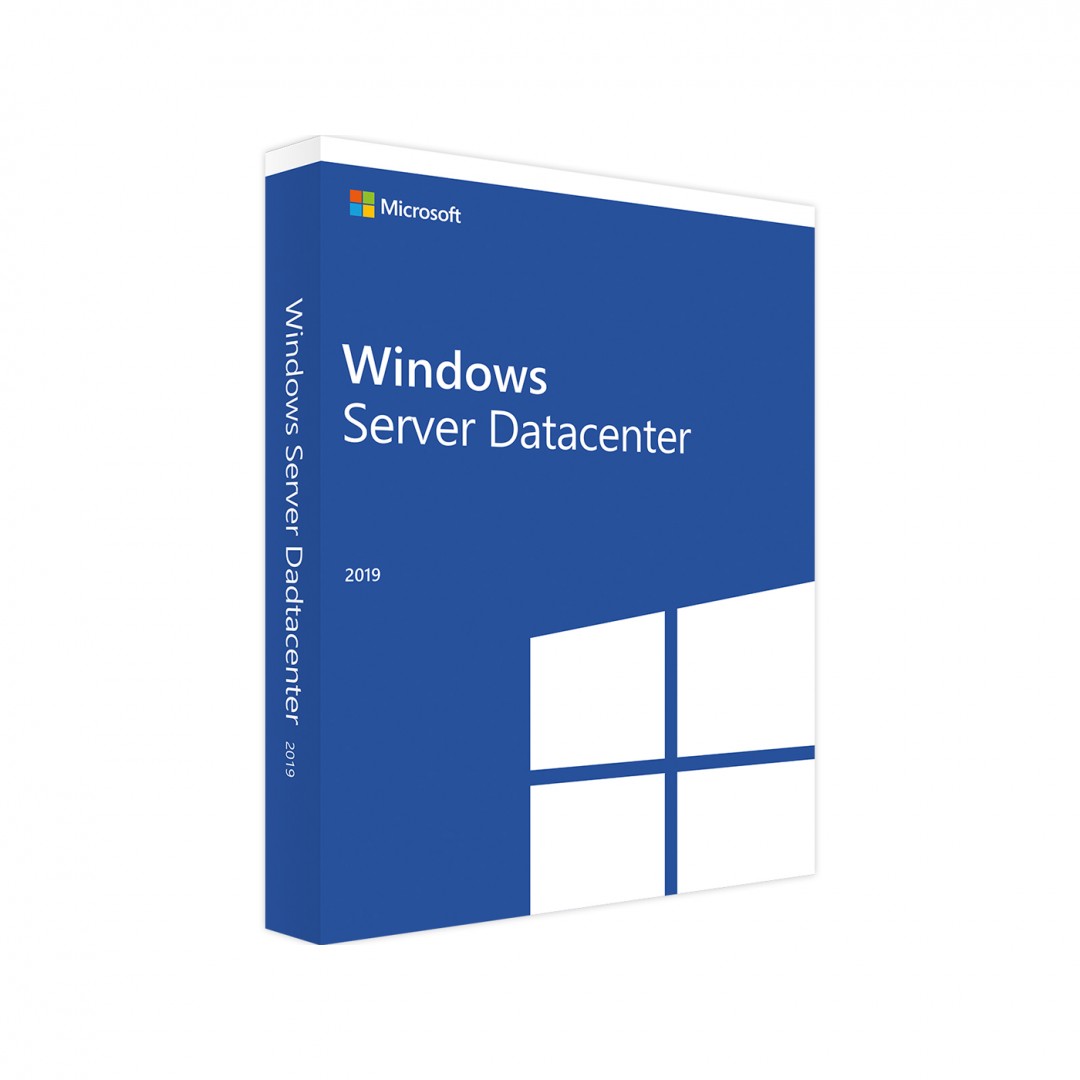Microsoft Windows Server 2019 Datacenter 1 Licence Αγγλικά σε Ηλεκτρονική άδεια
The Desktop Experience is back in Windows Server 2019! It is not included in Windows Server, version 1709, Windows Server, version 1803, or Windows Server, version 1809.
As with Windows Server 2016, during setup of the operating system it is possible to choose between Server Core installations or Server with Desktop Experience installations.
Windows Server 2019 is the operating system that bridges on-premises environments with Azure services enabling hybrid scenarios maximizing existing investments. Increase security and reduce business risk with multiple layers of protection built into the operating system. Evolve your datacenter infrastructure to achieve greater efficiency and scale with Hyper-converged Infrastructure. Windows Server 2019 also enables you to create cloud native and modernize traditional apps using containers and micro-services.
| Windows Server 2019 edition | Ideal for | Licensing model | CAL requirements |
|---|---|---|---|
| Datacenter | Highly virtualized datacenters and cloud environments | Core-based | Windows Server CAL |
| Standard | Physical or minimally virtualized environments | Core-based | Windows Server CAL |
| Essentials | Small businesses with up to 25 users and 50 devices | Specialty servers (server license) | No CAL required |
*CALs are required for every user or device accessing a server.
Windows Server 2019 feature comparison


| Feature | Standard edition | Datacenter edition |
|---|---|---|
| Core Windows Server functionality |  |
 |
| Hybrid integration |  |
 |
| Hyper-Converged Infrastructure |  |
 |
| OSEs*/Hyper-V containers | 2* | Unlimited |
| Windows Server containers | Unlimited | Unlimited |
| Host Guardian Service |  |
 |
| Storage Replica |  * * |
 |
| Shielded virtual machines (VMs) |  |
 |
| Software-defined networking |  |
 |
| Software-defined storage |  |
 |
*Windows Server Standard Edition license includes permission for two OSEs or VMs
**Limited to single volume up to 2TB.
Features
Server Core base container image reduced Server Core base container image size will reduce download time and further optimize the development time and performance.
Storage Migration Service helps to inventory and migrate data, security, and configurations from legacy systems to Windows Server 2019 and/or Azure.
Server Core Features on Demand (FoD) significantly improve the app compatibility of Windows Server Core by including a set of binaries and packages from Windows Server with Desktop without adding any of the Windows Server Desktop GUI or Windows 10 GUI experiences.
Group Managed Service Accounts (gMSA) provides a single identity solution for services running on a server farm, or on systems behind network load balancer. Using a gMSA, services or service administrators do not need to manage password synchronization between service instances. In Windows Server 2019, gMSA improves the scalability and reliability of containers to access network resources.
Hyper-V isolation provides a highly isolated container environment in which the host operating system cannot be affected in any way by any other running container.
Device guard (code integrity) helps ensure only authorized executables run on the server.
Remote credential guard works in conjunction with credential guard for Remote Desktop Protocol (RDP) sessions to deliver single sign-on (SSO), eliminating the need to pass credentials to the RDP host.
Credential guard uses virtualization-based security to help secure credential information against advanced persistent threats on the system and to protect it from being stolen by a compromised administrator or malware.
SDN encrypted subnet virtual network encryption provides the ability for the virtual network traffic to be encrypted between VMs that communicate with each other within subnets.
Cluster hardening new clusters running Windows Server 2019 will not require NTLM, which completely removes the requirement of Active Directory for clusters in Windows Server.
Shielded VMs for Windows use BitLocker to encrypt disk and state for Windows OS-based VMs.
Enhanced Windows Defender Advanced Threat Protection (ATP) is a new set of host intrusion prevention capabilities such as preventative protection, attack detection, and zero-day exploits.
Precision Time Protocol (PTP) enables network devices to add the latency introduced by each network device into the timing measurements, thereby providing a far more accurate time sample than Network Time Protocol (NTP).
Cluster-wide monitoring monitors memory and CPU usage, storage capacity, IOPS, throughput, and latency in real time with clear alerts when something’s not right.
Windows Server 2019 System Requirements
Processor
Processor performance depends not only on the clock frequency of the processor, but also on the number of processor cores and the size of the processor cache. The following are the processor requirements for this product:
Minimum:
- 1.4 GHz 64-bit processor
- Compatible with x64 instruction set
- Supports NX and DEP
- Supports CMPXCHG16b, LAHF/SAHF, and PrefetchW
- Supports Second Level Address Translation (EPT or NPT)
RAM
The following are the estimated RAM requirements for this product:
Minimum:
- 512 MB (2 GB for Server with Desktop Experience installation option)
- ECC (Error Correcting Code) type or similar technology
Storage controller and disk space requirements
Computers that run Windows Server 2019 must include a storage adapter that is compliant with the PCI Express architecture specification. Persistent storage devices on servers classified as hard disk drives must not be PATA. Windows Server 2019 does not allow ATA/PATA/IDE/EIDE for boot, page, or data drives.
The following are the estimated minimum disk space requirements for the system partition.
Minimum: 32 GB
Network adapter requirements
Network adapters used with this release should include these features:
Minimum:
- An Ethernet adapter capable of at least gigabit throughput
- Compliant with the PCI Express architecture specification.
- Supports Pre-boot Execution Environment (PXE).
A network adapter that supports network debugging (KDNet) is useful, but not a minimum requirement.
Για περισσότερα προϊόντα πατήστε εδώ
Για περισσότερα προϊόντα Microsoft πατήστε εδώ






There are no reviews yet.